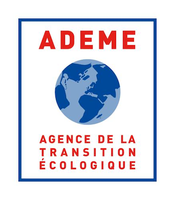Search eceee proceedings
Understanding peak periods of electricity use in Indian urban dwellings with and without air-conditioning
Panel: 8. Innovations in products, systems and building technologies
This is a peer-reviewed paper.
Authors:
Rajat Gupta, Oxford Brookes University, United Kingdom
Anu Antony, Oxford Brookes University, United Kingdom
Abstract
To meet the recently-established net zero target by 2070 in India, national electricity grid needs to be rapidly decarbonised using renewables. This requires a deeper understanding of the timing and peak periods of residential electricity use which is expected to increase by five times by 2032. This paper uses statistical clustering techniques to develop representative daily electricity use profiles and determine peak periods of electricity use in the summer, monsoon and winter seasons, using time-series data. Smart meters recorded electricity use data at 30 seconds for 9–11 months (2018) across 89 urban dwellings in India representing different climatic zones. About 54 out of 89 dwellings owned at least one air-conditioning (AC) unit. An unsupervised clustering technique was used to group electricity use curves with similar patterns using a combination of hierarchical and k-means algorithm, to characterise the diurnal and seasonal variations. The maximum point difference was used to identify the daily peak usage period.
Three distinct clusters emerged. The first cluster with largely AC dwellings had a prolonged night time peak of the highest magnitude, while the second cluster had a mix of AC/non-AC dwellings and experienced a late evening peak. The third cluster with predominantly non-AC dwellings experienced a short morning peak of lowest magnitude. The duration and magnitude of peak periods in the two AC clusters were different, indicating use of multiple AC units. Seasonal variation in electricity use was prevalent at the sample (89 dwellings) and sub-sample (54 AC dwellings) level. Mean daily electricity use of AC dwellings (n:54) in the summer and monsoon seasons was found to be around 13kWh/day which was twice that of non-AC dwellings (n:35, 6.4kWh/day). For AC dwellings mean daily electricity use in the cooling season (summer and monsoon) was double that of the non-cooling season (winter), while such seasonal variation was subtle in non-AC dwellings. It is evident that daily electricity profiles of all three clusters indicate potential for reducing the magnitude and duration of peak electricity use in urban Indian dwellings.
Downloads
Download this paper as pdf: 8-288-22_Gupta.pdf
Panels of
1. Dynamics of consumption: less is more?
2. Efficiency and beyond: innovative energy demand policies
3. Policy, finance and governance
4. Monitoring and evaluation for a wise, just and inclusive transition
5. Towards sustainable and resilient communities
6. Energy-efficient and low-carbon mobility for all
7. Policies and programmes for better buildings
8. Innovations in products, systems and building technologies



























